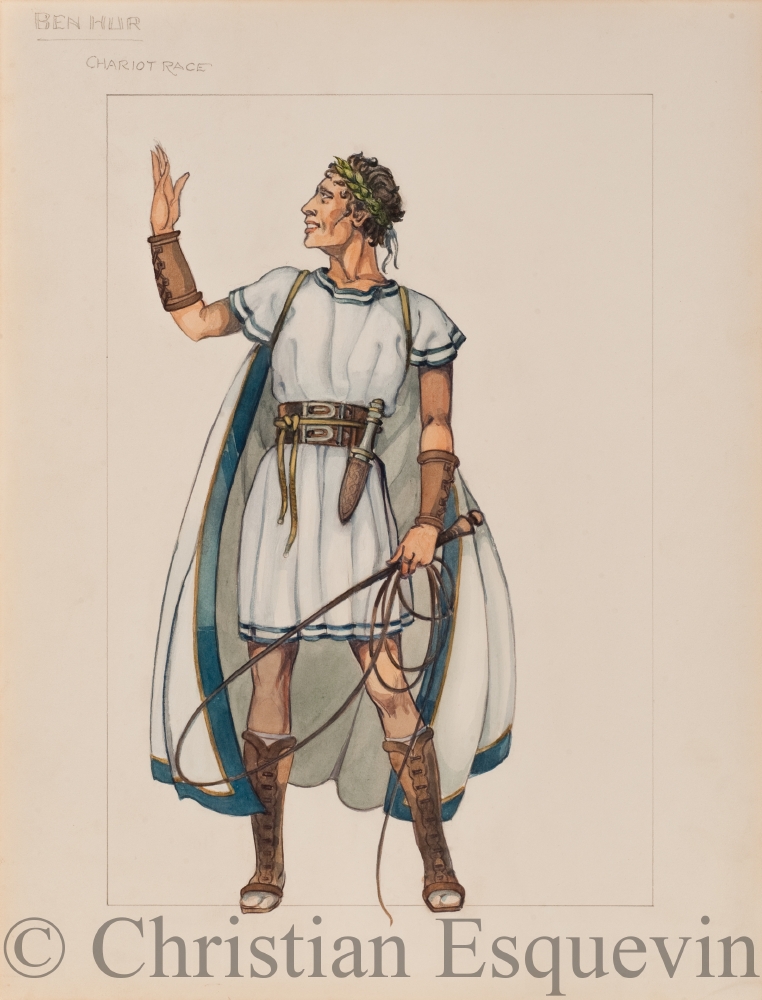Designing Hollywood: Sketches from the Christian Esquevin Collection explores five themes: Studios, Genres, Designers, Wardrobe, and Stars. During the exhibition, we'll bring you blog posts highlighting each of these topics. If you didn't catch the first post in this series, learn more about Studios here.
Today's post explores the four primary film genres and the ways in which costumes reinforce these genres.
 Ben-Hur: A Tale of the Christ (Metro-Goldwyn-Mayer, 1925)
Ben-Hur: A Tale of the Christ (Metro-Goldwyn-Mayer, 1925)
Designer: Harold Grieve (1901-1993)
Actor: Ramon Navarro (1899-1968) as “Ben-Hur”
Pencil, watercolor & gouache on paper
L2014.2.7
Movie audiences love to laugh and cry, cheer and cower: studios cater to these mercurial emotions to attract a broad swath of the dollar-spending public. Cinema genres touch on four basic types: Contemporary Dramas, Musicals, Romantic Comedies, and Historical Epics, but multiple combinations of these themes can make films difficult to pigeon-hole. Whether under studio-imposed contract during the first movie-making decades, or as freelancers today, most designers have experienced all of these genres at some point in their careers.
Dramas delve into character psychology, which designers often interpret through color: the first costumes in pale shades, but as the plot intensifies, darker hues envelope the actors. Musicals tend to be more lighthearted with over-the-top costumes, likely bedazzled in sequins and beads. Early “talkies” valued the sounds of singing, but required designers to be mindful of their material choices as sensitive microphones easily picked up rustling fabrics. Comedies create opportunities to play with costume proportions and give designers license to engineer stunt effects that perform on cue. And Historical films bring history alive again, allowing audiences face-to-face time with the famous that shaped the world. Generally, though, costume accuracy tends to be sacrificed to stylization in keeping with contemporary trends.
Clocking in at over two hours, Ben-Hur is a grand historical epic. Shot on location in Italy, it was the most expensive silent film ever made.1 Nearly $4 million was spent creating sets, purchasing wide-screen cameras, paying actors, and making costumes. As Ben-Hur, Ramon Navarro wore the blue and white tunic seen above in more than one scene of the movie.
See this costume sketch in Designing Hollywood at the FIDM Museum Tuesday-Saturday, from 10am-5pm through November 1, 2014.
1 Bible and Cinema: Fifty Key Films Ed. Adele Reinhartz (United Kingdom: Routledge, 2012) 36.

